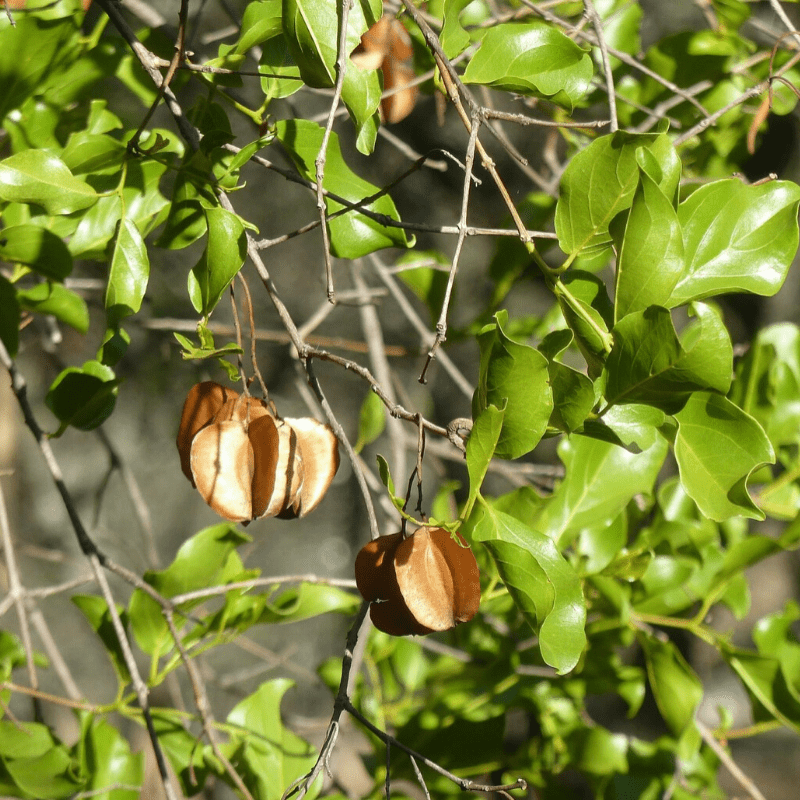The Red Bushwillow
(Combretum apiculatum)
Family: Combretaceae
Common names: red bush willow (Eng.); rooiboswilg (Afr.); umbondwe (Zulu); imbondvo (Swazi); mohwidiri (Tswana); mohwelere (Sepedi); muvuvha (Tshivenda); ndhuva (Tsonga)
SA Tree No: 532
Description
This is a single- or multi-stemmed, small tree 3-10 m high, with a short, often curved trunk, and a spreading, irregular canopy. The long, slender branches hang low down, giving the tree a willow-like appearance. It grows in higher rainfall regions. The bark on the main stem is grey to dark grey or brownish grey and smooth becoming scaly and rough with age.
The simple leaves have sharp, twisted tips, hence the specific epithet; they are shiny yellow-green in colour, alternate, opposite or in whorls of three at the nodes, with blades narrowly to broadly elliptic, oblong or broadly obovate. The base is roundish in outline. Young leaves are sticky. Flowers occur in axils on new shoots, 3-4 on each shoot. Petals are yellow to creamy green and strongly scented. It flowers in spring and summer, from September to February. The fruit is four-winged, 20-30 x 15-25 mm, almost round to ovoid, with wings up to 7 mm wide, glutinous when young, yellowish-green, often tinged with red. It has a single seed in the centre. It fruits in late summer to autumn, from January to May. Fruits often stay on the tree until the next flowers appear in August.
Derivation of name and historical aspects
Combretum is a Latin name referring to a climbing plant while the term apiculatum refers to the sharp tip of the leaf. Many of the Combretum species are climbers although this species is not.
Ecology
The red bush willow is a valuable fodder tree for browsing animals; mature green leaves are eaten by kudu, bushbuck, eland, giraffe and elephant. Cattle like the leaves when they are about to fall or have fallen, especially when they are least nutritious. It is considered as an indicator of mixed veld, good for spring- and summer grazing by most farmers but needs careful management. Its fruits pose a threat to livestock, especially the seeds which are poisonous but eaten by Brown-headed Parrots. The sweetly scented flowers are visited by bees and ants.
Uses
The wood is very hard, making it resistant to both borers and termites; it provides useful fencing poles, mine props and wheel spokes, and makes good furniture, but as the pieces are not large, they can only be used to make small items. It also makes good firewood and charcoal. The bark is used for tanning leather. Medicinally, a decoction of the leaves has been used as a steam bath and as an enema to relieve stomach disorders. As treatment for conjunctivitis, an ash from the burnt stem is mixed with white clay and water and the resulting paste is spread over the face.








